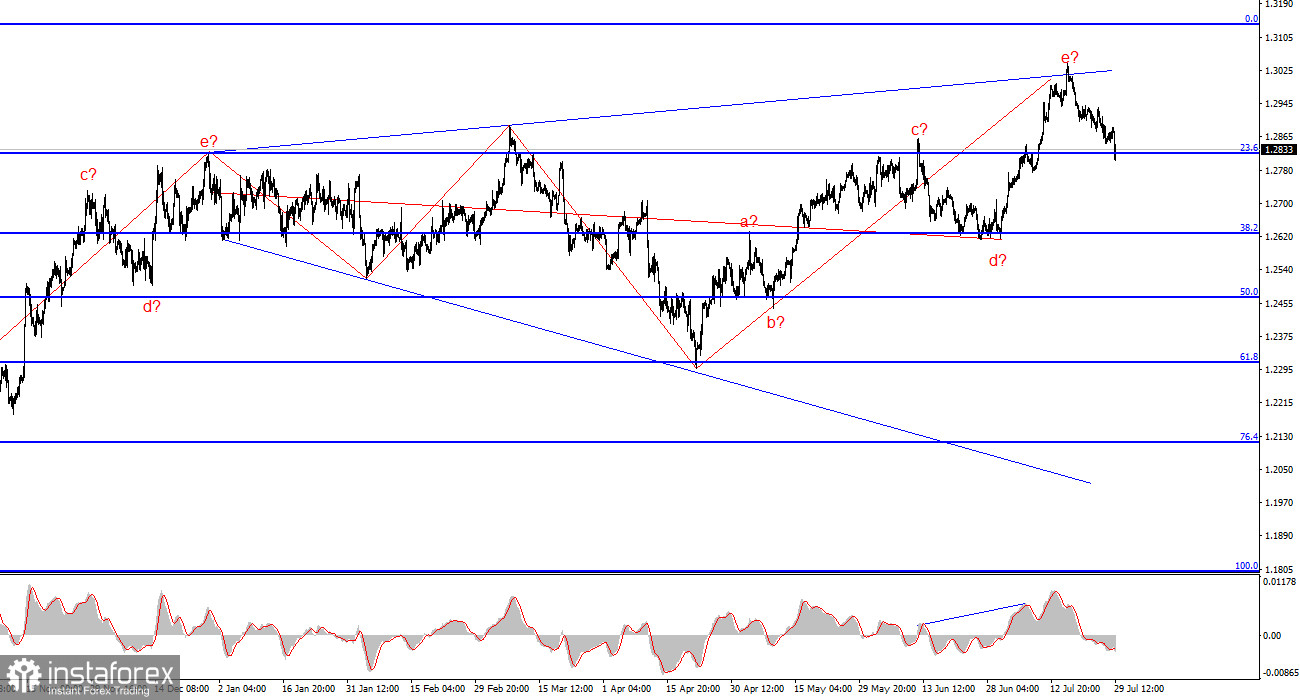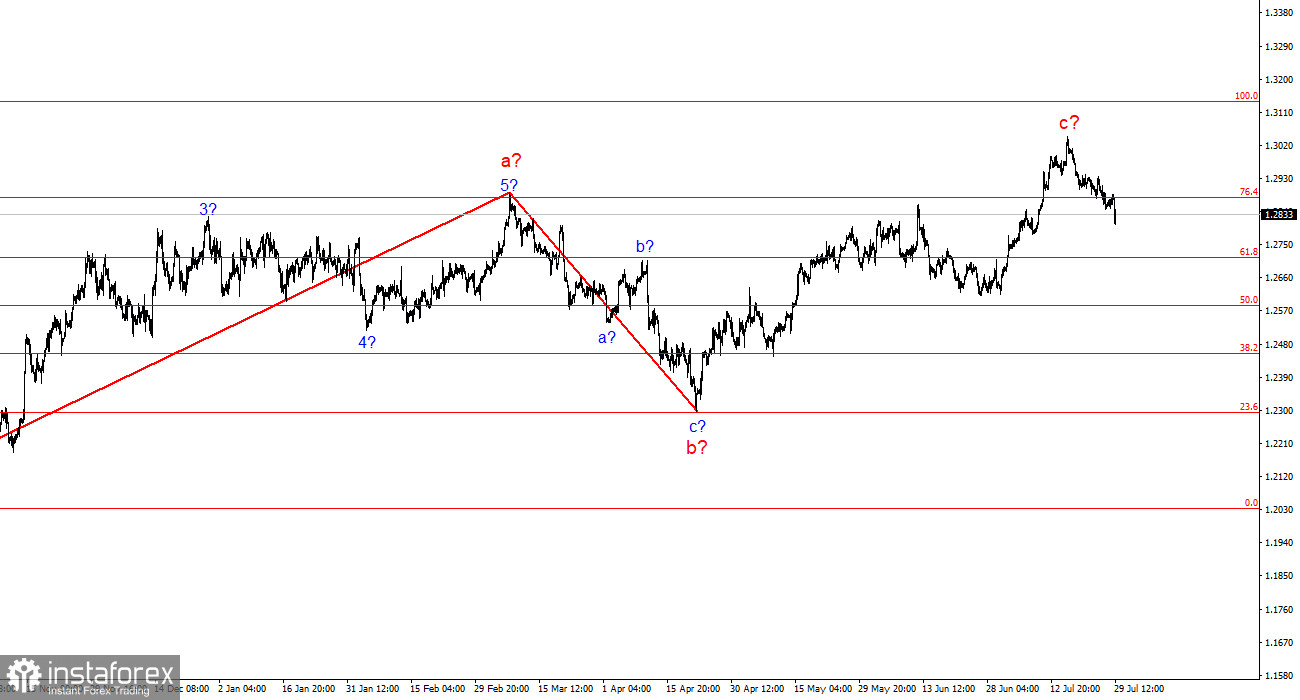
The wave structure for GBP/USD remains quite complex and ambiguous. For some time, the wave pattern seemed convincing and suggested the formation of a downward wave set with targets below the 1.2300 level. However, the demand for the US currency grew too much for this scenario to materialize.
Currently, the wave structure has become unreadable. I use simple structures in my analysis, as complex ones have too many nuances and ambiguous points. What we see now is an upward wave that overlaps a downward wave, which in turn overlaps a previous upward wave, and so on. The only assumption we can make is an expanding triangle with a peak around the 1.3000 level and a balanced line around the 1.2600 level. Two weeks ago, the upper line of the triangle was reached, and the unsuccessful attempt to break through it indicates the market's readiness to build a downward set of waves.
The Pound is Ready to Continue Falling
The GBP/USD exchange rate decreased by 25 basis points on Monday but has been gradually decreasing for two weeks. For me, the key point is the reaction to the upper line of the expanding triangle. From this point, I expect a strong decline in the pound, similar to several months ago. The market solved this issue, and the wave structure had to be revised. However, I saw no reasons for an upward trend in winter and spring, and I still don't see them now.
The Federal Reserve and the Bank of England will hold meetings this week. While nothing new is expected from the Fed, the Bank of England might move towards a more dovish policy. And this is no longer just my expectation based on inflation figures; it is now a consensus opinion. The start of rate cuts by the Bank of England will further reduce demand for the pound. The minimum target for the decline is the 1.2600 level. The Bank of England has no reason to wait longer for inflation to decrease.
As for the Fed, the market will again await signals about a potential rate cut in September. However, such signals are unlikely. Powell will again emphasize the importance of incoming data, the positive but uneven trajectory of inflation, and the strength of the economy, which allows for a measured approach to easing. The market may extract selective phrases that match its expectations. Nevertheless, I expect a sig
General Conclusions
The wave pattern for GBP/USD still suggests a decline. If a new upward trend section began on April 22, it has already acquired a five-wave form. Therefore, a minimum three-wave correction should now be expected. The unsuccessful attempt to break through the upper line of the triangle indicates the market's readiness to form a downward wave set. In the near future, sales of the instrument should be considered with targets around the 1.2820 and 1.2627 marks, corresponding to 23.6% and 38.2% Fibonacci retracements.
On the higher wave scale, the wave pattern has transformed. We can now assume the construction of a complex and extended upward corrective structure. It is a three-wave structure, but it could evolve into a five-wave structure, which might take several more months or longer to form.
Key Principles of My Analysis:
- Wave structures should be simple and understandable. Complex structures are difficult to play out and often change.
- If there is no certainty about the market situation, staying out is better.
- There is never a 100% certainty in the direction of movement. Don't forget about protective Stop Loss orders.
- Wave analysis can be combined with other types of analysis and trading strategies.
 English
English 
 Русский
Русский Bahasa Indonesia
Bahasa Indonesia Bahasa Malay
Bahasa Malay ไทย
ไทย Español
Español Deutsch
Deutsch Български
Български Français
Français Tiếng Việt
Tiếng Việt 中文
中文 বাংলা
বাংলা हिन्दी
हिन्दी Čeština
Čeština Українська
Українська Română
Română


